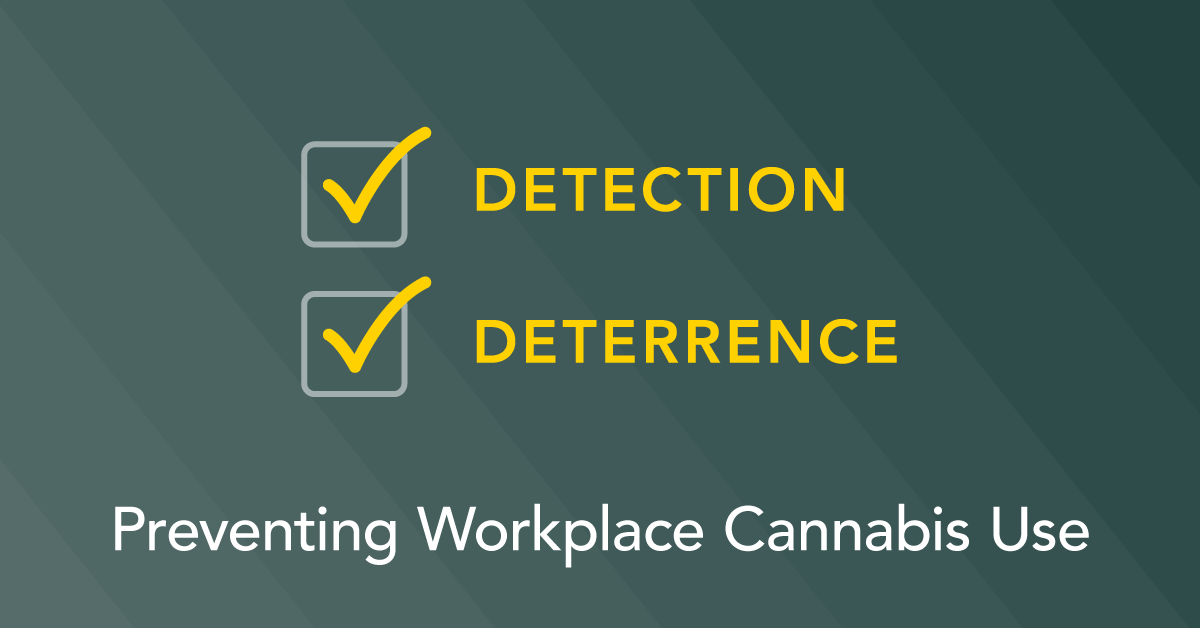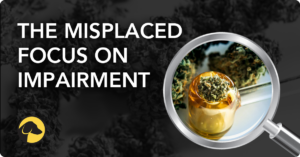
Much Ado About Detection
The United States is over two decades into cannabis legalization but is still in the infancy of cannabis reform. While states contemplate rules, regulations, and the implementation of legalized cannabis, the federal government continues to classify cannabis as a federal Schedule 1 drug.1 This has resulted in a strange environment where legalization across all states is hampered by the lack of a universal impairment standard for cannabis, but the federal status of cannabis prevents much of the necessary research required to set a per se legal impairment limit to apply in both the workplace and roadside.
But all this focus on an impairment standard may simply be a red herring because impairment simply does not apply to workplace cannabis testing.
Impairment is when a person’s faculties are reduced so that his or her ability to see, hear, walk, talk, and judge distances is below the normal level as defined by the state.2 A per se legal impairment limit, like .08 for alcohol, is a term that means “by itself.” Having a .08 blood alcohol content in all states (but Utah)3 means you are guilty of driving while intoxicated without regard to any other evidence.4 In other words, if you provide a breath or blood sample at or above that legal limit, there is no further evidence required. But does it mean every individual who tests at or above .08 is impaired? It does not. It is, in a sense, an average based on millions of data points, but because use and testing are highly individualized, it is not a true indicator of impairment. It is a “line in the sand,” a non-discriminatory, objective measure.
EVOLUTION OF DRUG TESTING PROGRAMS
Despite common thought and debate in new laws, impairment has little place when considering workplace drug testing. Approximately 75-80% of workplace drug testing is pre-employment. And what is the purpose of pre-employment testing? It is a non-discriminatory, objective measure that qualifies an individual for a position. It is a highly effective deterrence tool for employers who want to limit the cost and exposure of drug use in the workplace. It is NOT a measure of impairment.
When combining the idea of impairment and deterrence, it is helpful to remember workplace drug testing cannot and never has strived to detect impairment. Current drug tests do not pinpoint impairment and, in fact, can combine past use of cannabis with recent use. A traditional post-incident positive drug test for cannabis doesn’t determine if a person consumed cannabis moments before an incident or 24 hours to 60-plus days ago and therefore it can’t indicate if cannabis may have contributed to the incident. Tests provide an objective measure upon which employers can create and enforce a policy.
UPDATING POLICIES + TESTING TECHNOLOGY FOR A NEW ERA
With legal cannabis, deterring use at work is critical, but so is the need to treat employees and candidates fairly, particularly in this changing legal landscape. The HOUND® CANNABIS BREATHALYZER provides the solution employers need to strike this balance – shifting focus from past use to isolated recent use while strengthening objectivity with fast, instrument-read technology.
Employers can deter use by using breath testing technology immediately after hire and throughout employment to enforce policies that do not allow use immediately before or while at work but do not penalize cannabis use outside work as outlined in the employer’s policy. Since cannabis breath testing only detects THC (the psychoactive ingredient in cannabis) for several hours after use, the objective result allows an employer to continue to deter use without penalizing for past use and incorporates all organizational perspectives, including human resources, legal, and safety professionals.
Working with their legal departments, companies can get back to the basics of having a comprehensive cannabis testing program with a high return on investment by maintaining productivity and retaining employers with a fairer testing method.
As cannabis legalization continues to be addressed on a state-by-state basis without a universal cannabis impairment standard, employers need to focus on fast, instrument-read, objective testing that aligns with an employer’s drug-safe workplace policy. Jumping ahead to create and implement drug testing and workplace policies based on a standard that does not exist can leave employers vulnerable to lawsuits and unable to recruit and retain the workers needed in a tight labor market.
To learn more about the complexity of impairment and current drug testing methods, check out this blog Overhauling Workplace Cannabis Testing Policies, or contact us for additional insight on how the Hound® solution can improve the effectiveness of your drug testing program.
Footnotes
1 DEA
2 USLegal
3 NPR
4 Verywell Mind

July 7, 2022
By NINA M. FRENCH
Share












